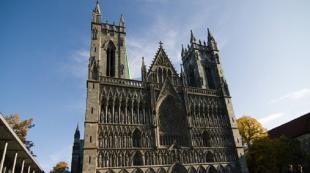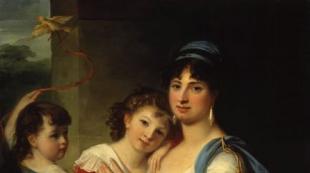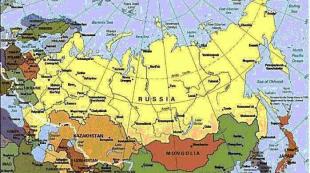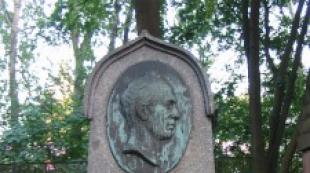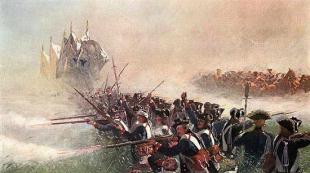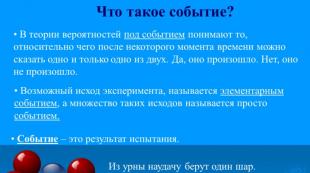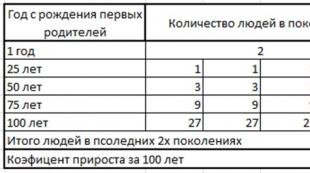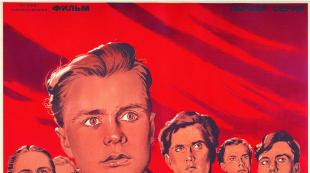Hetman hodkevich is a troubled time. Biography. Defender of Europe from the Ottoman invasion
Son of Jan Jerome Chodkiewicz, castellan Vilna, and Kristina Zborovskaya. He studied at the Vilnius University (Academy), then went abroad. In 1586-1589, together with his brother Alexander, he studied philosophy and law at the Jesuit Academy in Ingolstadt (Bavaria). After his studies, he visited Italy and Malta to study the art of war, and also fought in the Spanish service in the Netherlands, where he had the opportunity to personally meet the Duke of Alba and Moritz of Orange.
He began his service in the troops of the Polish-Lithuanian Commonwealth under the command of Hetman Zholkevsky during the suppression of the uprising of Nalivaiko. Participated in campaigns to Moldova under the command of Jan Zamoyskiy. In 1601 he became a full hetman of the Grand Duchy of Lithuania.
War with Sweden
He actively participated in the war with Sweden. Despite the difficulties (for example, the lack of help from King Sigismund III and the Diet), he won victories. In 1604 he took Dorpat (now Tartu, Estonia); defeated the Swedish troops twice. For the victories won in March 1605, he was rewarded with the title of Grand Hetman of the Grand Duchy of Lithuania.
However, Chodkiewicz's greatest victory was still ahead of him. In mid-September 1605, Swedish troops were concentrated near Riga. Another Swedish army was heading here, led by King Charles IX; thus, the Swedes had a clear advantage over the troops of the Commonwealth.

On September 27, 1605, the Battle of Kirchholm (now Salaspils, Latvia) took place. Chodkiewicz had about 4,000 soldiers - mostly heavy cavalry (hussars). The Swedish army numbered about 11,000 people, of which most (8,500 people) were infantrymen.
However, despite such an unfavorable superiority of forces, Chodkiewicz managed to defeat the Swedish army within three hours. A key role in this was played by the competent use of cavalry: having lured the enemy from his fortified positions with a feigned retreat, Chodkiewicz's troops crushed the advancing Swedish infantry and, with the support of artillery, defeated the main enemy forces. King Charles IX was forced to flee from the battlefield, and the Swedish army, ending the siege of Riga, returned back to Sweden. Chodkiewicz received congratulatory letters from Pope Paul V, Catholic sovereigns of Europe (Rudolf II of Austria and James I of England), and even from the Turkish Sultan Ahmed I and the Persian Shah Abbas I.
However, even such a significant victory did not improve the position of Chodkiewicz's troops financially. There was still no money in the treasury, and the army began to simply scatter. Internal troubles led to the fact that the Rzeczpospolita did not take advantage of the fruits of the victory.
Rokosz Zebrzydowski
For the next five years, Jan Chodkiewicz actively participated in the internal struggle that flared up inside the Commonwealth. Attempts by King Sigismund III to somewhat centralize the administration of the state provoked an uprising (the so-called "rokosh") led by Mikołaj Zebrzydowski (Polish Mikołaj Zebrzydowski). Among the Lithuanian nobility, the rokoshan was supported by one of the leaders of the Calvinists, Jan Radziwill. In 1606, the opposition turned to hostilities.
Initially, Chodkiewicz remained neutral in the flaring conflict, however, after Jan Radziwill (the enemy of the Chodkiewicz) joined the Confederates, he condemned the rokos and supported the king. On July 6, 1607, in a decisive battle at Guzov, the royal army defeated the opposition; Chodkiewicz commanded the troops on the right flank.
The victory over the opposition and the suppression of its actions, however, did not allow the king to continue the reforms begun. government controlled... A compromise triumphed, which actually meant the end of the centralizing policy of King Sigismund.
Return to Inflants
In the meantime, the Swedish troops re-activated. The internal troubles of the Polish-Lithuanian Commonwealth allowed them to take White Stone in the spring of 1607, and on August 1, 1608 - Dinamünde (now Daugavgriva, since 1958 - part of Riga).
In October 1608, Chodkiewicz returned to the Inflants, and immediately launched a counteroffensive. On March 1, 1609, the two thousandth army under his command took Pernov (now Pärnu) by night storm, and then returned to Riga. Success again accompanied Chodkiewicz: his cavalry detachments defeated the advanced troops of the Swedes, which forced the Swedish commander-in-chief, Count Mansfeld, to retreat from Riga. The capture of the Dinamünde fortress and the victory of the small Polish-Lithuanian fleet over the superior Swedish fleet provided the Polish-Lithuanian Commonwealth with an advantage in this region. Again Chodkiewicz did not receive reinforcements - King Sigismund was preparing for a war with Russia. The death of King Charles IX of Sweden on October 30, 1611 made it possible to start peace negotiations, and until 1617 hostilities in the Baltic were stopped.
Participation in campaigns against Russia: background
The reason for the start of the war with the Moscow state was the introduction into the territory of Russia of the Swedish corps under the command of J. Delagardi at the request of Tsar Vasily Shuisky. Since Rzeczpospolita was at war with Sweden, this was seen as a hostile act. King Sigismund personally led the troops that invaded the territory of Russia. In September 1609, he began the siege of Smolensk, which ended in June 1611 with the fall of the city. After the shameful defeat of the Moscow army under the command of D.I. The new government, "Seven Boyarshina", invited the prince Vladislav to the Moscow throne, but Sigismund did not let his 15-year-old son go to Russia; Moscow was occupied by a Polish-Lithuanian garrison headed by Stanislav Zholkiewski.
Jan Karol Chodkiewicz, as the great Lithuanian hetman, opposed assistance to False Dmitry II and the war with Russia. The experience of the confrontation with Sweden, when the lack of money and reinforcements did not allow Chodkiewicz to inflict a decisive defeat on the enemy, gave no reason to hope for a quick victory. Nevertheless, in April 1611, Khodkevich marched on Pskov, and for five weeks besieged the Pskov-Caves monastery, but he could not take it, and retreated.
The first campaign against Moscow (1611-1612)
In early autumn 1611, Jan Karol Chodkiewicz, by order of the king, led the troops to help the Polish-Lithuanian garrison in the Moscow Kremlin. In Shklov, stocks of supplies and ammunition were collected, as well as about 2,500 soldiers, who on October 6, 1611 approached Moscow. Khodkevich's troops had to endure a series of clashes with detachments of the 1st militia under the command of Dmitry Trubetskoy; their arrival saved the Polish-Lithuanian garrison of the Kremlin from surrender, but it was not possible to deliver supplies to the besieged. In the detachment of Chodkiewicz, the contradictions between the Poles and the soldiers from the Grand Duchy of Lithuania intensified, and at the beginning of November 1611, the army, which had been reduced to 2,000 people, retreated to Rogachevo. Here Khodkevich again collected supplies, and on December 18 nevertheless delivered them to the Kremlin garrison.
In 1612, such campaigns to supply the Polish-Lithuanian garrison with provisions were successfully repeated twice more; the next campaign took place in late August - early September 1612. Simultaneously with Chodkiewicz, King Sigismund and Prince Vladislav went to Moscow to take the throne; they were accompanied by chancellor Lev Sapega. However, at Moscow, Khodkevich was met by the troops of the 2nd and the remnants of the 1st militia, which together had more strength; he failed to get through to the Kremlin. On August 31, 1612, Khodkevich's troops were located 5 kilometers from the walls of Moscow, on Poklonnaya Gora. On September 1, they occupied the Novodevichy Convent and tried to enter Moscow through the Chertolsk Gate, but were repulsed. The next day, Khodkevich tried to break through to Moscow from the south, through the Donskoy Monastery and the Kaluga Gate. His troops managed to break through to Zamoskvorechye to Bolshaya Ordynka and Pyatnitskaya streets, but again failed to break through to the Kremlin and Kitai-gorod. On September 2, Chodkiewicz renewed his attacks. His soldiers came close to the bank of the Moskva River, but even now the militia did not allow them to reach the bank itself. Meanwhile, Kuzma Minin with selected forces crossed the Moskva River and struck in the area of the Crimean courtyard (now the area of the Crimean bridge). Chodkiewicz was finally defeated; having lost about 500 people and a baggage train with provisions, he was forced to retreat. The victory of the militias decided the fate of the Polish-Lithuanian troops in the Kremlin: on November 1 Kitay-Gorod was surrendered, and on December 6, having exhausted all food supplies, the Kremlin garrison surrendered.
Retreating, Chodkevich met in Vyazma with the army, in which, along with his father (King Sigismund), was the prince Vladislav IV, who was heading for Moscow to take the Russian throne. However, this army lingered at Volokolamsk and did not manage to prevent the surrender of the Polish-Lithuanian garrison of the Kremlin.
In February 1613, the Zemsky Sobor elected MF Romanov to the Russian throne of Russia, and the hopes of the Commonwealth and King Sigismund for the Russian crown became even more ghostly.
Second campaign to Moscow (1617-1618)
In 1613-1615, Chodkiewicz commanded the Polish-Lithuanian troops in the newly formed Smolensk Voivodeship. At this time, the royal court returned to the plan to plant the king's son Vladislav on the Moscow throne. Chodkiewicz led the Polish-Lithuanian troops.
On October 11, 1617, Khodkevich's detachments took the Dorogobuzh fortress; after a while they besieged and took Vyazma. From here Vladislav began to send letters to various segments of the population of Russia. However, these credentials met with little success; most of the boyars, nobles and Cossacks remained indifferent to them. After the occupation of Vyazma, frosts struck, and hostilities ceased. The prince and the hetman remained in Vyazma, preparing for a further campaign. The fighting was reduced to raids on the surrounding, and so ravaged by the war, areas of the light cavalry detachments of Alexander Lisovsky ("fox"). In the spring of 1618, forces were assembled for an offensive against Moscow. Chodkiewicz had 14,000 men under his command, including about 5,500 infantry. However, discipline in the army was weak. In the high command, disputes over command posts began. The king's son Vladislav and his favorites often interfered in the decisions of the command. The situation was further worsened by the news that the Diet had authorized the financing of the campaign against Russia only in 1618.
In June 1618, Chodkevich's troops began a campaign against Moscow. The hetman himself wanted to advance through Kaluga, but Vladislav managed to insist on a direct attack on the Russian capital. In early October 1618, Polish-Lithuanian troops occupied the village of Tushino (north of Moscow), and began preparations for the assault. At the same time, the 20,000th Cossack army of Hetman P. Sagaidachny approached Moscow from the south. On the night of October 11, Polish-Lithuanian troops began an assault on Moscow, trying to break through the Tversky and Arbat gates, but the attack was repulsed. In the conditions of the impending winter and lack of funding, the king's son Vladislav agreed to negotiations. On December 11, 1618, an armistice was signed in the village of Deulino (near the Trinity-Sergius Monastery) for a period of 14 and a half years. According to its terms, Russia ceded the Smolensk land, which became part of the Grand Duchy of Lithuania, as well as the Chernigov and Seversk lands, which became part of the Polish crown.
Jan Karol Chodkiewicz returned from this campaign disappointed. Years of constant wars had a serious impact on his health, he was increasingly sick. Not everything was going well in the family. Chodkiewicz withdrew from public affairs for a while and took up the management of his estates.
War with Turkey (1620-1621)
In 1620 Rzeczpospolita was involved in the war with the Ottoman Empire. In August 1620 polish army suffered a crushing defeat at Tsetsora (near Yassy). The Grand Crown Hetman Stanislav Zholkiewski was killed, and the Crown Hetman Stanislav Konetspolsky was captured. In December 1620, Jan Karol Chodkiewicz received command of all the forces of the Polish-Lithuanian Commonwealth.
In September 1621, having gathered troops, Chodkiewicz crossed the Dniester and occupied the Khotin fortress. Despite the difficult situation with food, the troops of Chodkiewicz repulsed all the attacks of the significantly superior troops of Turkey and its vassal - (of the Crimean Khanate. On September 23, the seriously ill Chodkiewicz handed over command of the army to the crown lord Stanislav Lubomirsky. The great Lithuanian hetman Jan Karol Chodkiewicz died on September 24. Learning about this. , the Turks tried to re-seize the camp of the Polish-Lithuanian troops, but again failed twice. completed.
Personal life
Jan Karol Chodkiewicz married in 1593 the daughter of the governor of Podolsk and the hetman of the great crown Nikolai Meletsky, the widow of the Slutsk prince Jan Simeon Olelkovich Sofia Meletskaya (1567-1619). From this marriage he had a son Jerome (1598-1613) and a daughter Anna-Scholastica (1604-1625), who was married to Jan Stanislav Sapieha (1589-1635), the eldest son of Lev Sapieha, chancellor of the great Lithuanian. After the death of his wife, Jan Karol Chodkiewicz married for the second time to Anna-Aloisia of Ostrog (1600-1654). Political motives played a key role in this marriage: the 60-year-old hetman was persuaded to marry a 20-year-old princess by his brother, Alexander Chodkevich, who did not want his brother's richest possessions to pass into the possession of the Sapieha clan. The marriage took place on November 28, 1620 in Yaroslav. Immediately after the marriage, the hetman went to the Diet in Warsaw, and then on his last campaign.
After Jan Karol Chodkiewicz, large estates remained. The main ones were: Bykhov and Gory in the Orshinsky district, Lyakhovichi in Novogrudok, Svisloch in Volkovysky, Shkudy and Kretinga in Samogitia. Together with his brother Alexander, he was the owner of Shklov and Shklov county. It is worth noting that due to the lack of state funding, Jan Karol Chodkiewicz spent his personal funds on the troops, and therefore his debts before his death reached 100 thousand zlotys (more than the annual income from all his possessions). Nevertheless, over the property of Chodkiewicz, feuds began between the magnate families who were related to him. Claims against him were declared by: daughter, Anna-Scholastica, and her husband, Stanislav Sapega; Jan Karol's brother Alexander Chodkiewicz; and, finally, the young widow Anna-Aloisia Chodkevich (née Ostrozhskaya) together with her guardians.
The struggle for property ended only two years later, in May 1623, when all the relatives finally divided the hetman's inheritance. The hetman's widow made sure that his body was not buried in the city of Kretinga, which belonged to the Chodkevichs (where his first wife was buried), as he himself wanted, but in the residence of the princes of Ostrog - the city of Ostrog in Volyn.
Jan Chodkiewicz (1560-1621)
The oldest Belarusian-Lithuanian clan of the Khodkevichs of the coat of arms "Vulture with a sword" has been known since the 15th century - the first representative of the clan was the boyar Khodar-Fyodor Yuryevich, whose signature is already under state documents. His son Ivan (1430-1484) served as a state marshal, governor of Vitebsk, head of Lutsk. The Kiev voivode Ivan Fedorovich in the battle with the Crimean Tatars in 1482 was taken prisoner and died in the Crimea. His son Alexander Ivanovich (1457-1549) also served as a state marshal, governor of Novogrudok, head of Brest. One of his sons, Geronim, became the founder of the middle line of the family and the grandfather of the outstanding commander Jan Karol Chodkiewicz. The second son of Alexander Ivanovich, the famous Grigory Alexandrovich (1510-1572), became an outstanding statesman and military leader of the Grand Duchy of Lithuania.
Geronim Aleksandrovich Khotkevich in the middle of the second half of the 15th century held the posts of subordinate to the Grand Duchy of Lithuania, general headman of Zhamoyt, Kashtelian of Vilna, head of Oshmyany. Jan Karol's grandfather significantly strengthened the position of the Chodkiewicz family in the Grand Duchy of Lithuania.
The son of Geronim Aleksandrovich Yan (1537-1579) received the title of steward of the Principality, served as the general headman of the Zhamoyt, Vilnius kashtelian, administrator of the Inflants, and headman of the Covenian. He participated in the Livonian War, distinguished himself in the battle at the Ula River. Graduated from the Krakow and Leipzig universities, who knew European languages, studied history and philosophy, Jan Geronimovich received the count's title from the German emperor Ferdinand I in 1569. Lithuanian "Terrible", and not "Terrible", as a contender for the royal throne of the Commonwealth.
Jan Chodkiewicz was married to the daughter of Polish tycoon Zborowski Kristina. In 1560 their son Jan Karol was born. At first he was taught at home, and in 1573 he was sent to study in Vilna, where he successfully graduated from the Jesuit college and academy. From 1586 to 1589, he studied law and philosophy at the Jesuit Academy in Ingolstadt. Then Jan Karol attended lectures at the University of Padua, visited the Knights of Malta, where he studied military science - firearms, artillery, fortifications and fortress siege techniques. Wherever he was, Jan Karol studied the theory and practice of military affairs.
In 1590 he returned home and two years later married the daughter of the governor of Podolsk, Sofia Mialetskaya.
In 1594, an uprising of the Cossacks, led by Severin Nalivaiko, began in Ukraine. Cossack detachments reached Polesie. Jan Karol became a military man - forever. A year later, he commanded a horse company, took part in battles - near Kiev, Lubny. In 1596 he received the title of subordination of the Grand Duchy of Lithuania, in 1599 he became the elder of the Zhamoytsky district. In 1600, Jan Karol went on a campaign to Moldova - at the head of his own cavalry company, participated in the battle of Ploiesti. In the same year Jan Karol Chodkiewicz became a full hetman.
In 1600, the Polish-Lithuanian Commonwealth's war with Sweden began, which lasted thirty years. King of the Commonwealth Sigismund Vasa, who was also the Swedish king, lost his second crown - the war was going on for hegemony in the Baltic. Full hetman Jan Chodkiewicz in the army of the great Lithuanian hetman Krishtof Radziwill moved to the Inflants. In 1601 Chodkiewicz distinguished himself in the battle of Kokenhausen, which was taken by the Poles. The detachments of Jan Karol took Wenden, defended Riga, stormed Wolmar, Vesenberg, Fellin, Dorpat. The complete hetman in 1604 distinguished himself during the assault on the White Stone fortress. In 1602, the command of the troops in the Baltics passed to Jan Chodkiewicz, a year later he became the administrator of the Inflants - during the assault and siege of Dorpat, his troops captured eighty Swedish cannons.
In 1604, Duke Karl Sudermanland, the former royal regent, became king of Sweden. A new stage of hostilities began. In the spring of 1605, the two armies met at Riga. The fifteen thousandth Swedish army, led by Charles IX, was opposed by a three times smaller army of Hetman Jan Chodkiewicz.
On September 27, a few kilometers from Riga, near the village of Kirchholm - Salaspils, on the banks of the Dvina, a battle took place. Chodkiewicz used the technique of a false retreat, as a result of which the Swedes abandoned their fortified positions. Chodkiewicz brought the Swedish troops under the murderous fire of his cannons - it was not for nothing that he learned artillery shooting from the Knights of Malta. The battle formations of the Swedes were mixed and Lithuanian and Belarusian cavalry regiments rushed at them.
After three hours of a fierce battle, the Swedish army was defeated, losing almost every third soldier killed, the king himself miraculously left the battlefield. The escaped king a few hours before had told the courtiers: “I am sure that the Lithuanians will flee” - it turned out the other way around. Even the wind beat in the face of the Swedes. The armored hussars of Chodkiewicz were cutting down Swedish reitars everywhere - Jan Karol appeared in many hot places and personally hacked down several Swedes who attacked him.
The army of Jan Chodkiewicz took 60 Swedish banners, 10 cannons and the entire train, and took several hundred prisoners. The hetman was congratulated by the King of the Commonwealth Sigismund III, the German emperor Rudolph II, the English king James I, even the Persian Shah Abbas the Great, the Turkish Sultan Ahmed I, Pope Paul V. News of the victory of Chodkiewicz's army over a three times larger and very strong Swedish army spread throughout Europe.
Four years later, hostilities in the Baltic - Inflants resumed, and only the death of the Swedish king Charles IX stopped them - in 1611, a truce was concluded between Sweden and the Commonwealth, which lasted until 1617.
In 1609, the war between the Commonwealth and the Muscovy began, against which Jan Karol Chodkiewicz was - he understood that the "problem of Sweden" was far from being solved. However, the Polish and Lithuanian-Belarusian elites still had a strong desire to create a Slavic confederation of three states - Poland, the Grand Duchy of Lithuania and the Moscow state.
In September 1609, the united army of the Commonwealth, led by King Sigismund III, laid siege to Smolensk, which was taken only two years later - in June 1611. The Moscow government - "Seven Boyarshina" - which tonsured Tsar Vasily Shuisky as a monk, signed an agreement with King Sigismund that his son Vladislav would be the new Tsar of Moscow. The inhabitants of Moscow and several other cities of the kingdom took the oath to the Korolevich. The fifteen-year-old prince himself did not go to Moscow, but a garrison, headed by S. Zholkevsky, appeared in the capital of the kingdom.
In the fall of 1611, the great Lithuanian hetman Jan Chodkiewicz brought to Moscow a large wagon train with food, weapons and ammunition for the Polish-Lithuanian garrison. In the spring of 1612, Jan Chodkiewicz visited Moscow twice more.
In September 1612, the king of the Polish-Lithuanian Commonwealth Sigismund III and his son Vladislav, accompanied by the banners of the great hetman of Lithuania, approached Moscow - there they were met by the troops of D. Pozharsky and K. Minin. Jan Chodkiewicz with armored hussars made his way to the capital of the state through the Kaluga gate and cut himself on the streets of Bolshaya Ordynka and Pyatnitskaya - Moscow soldiers did not let him go further. After several violent clashes, the great hetman could not get through to the Kremlin and retreated, abandoning a large baggage train and standing not far from Moscow.
In November 1612, the Polish garrison surrendered in the Kremlin. The king and his son could only reach Vyazma. If their troops could break through and unite with the banners of Jan Chodkiewicz, then the history of the Muscovy and the Grand Duchy of Lithuania could have gone completely differently. In February 1613, the Zemsky Sobor elected the young Mikhail Romanov tsar - the Muscovy remained independent.
In 1613-1615, the troops of Jan Chodkiewicz guarded the border of the Commonwealth, not allowing Moscow regiments to reach Smolensk.
In 1617, King Sigismund again decided to put his son on the Moscow throne. In October, the troops of the great hetman of Lithuania took Vyazma. Prince Vladislav arrived there. Throughout the winter, the Polish troops with the prince stood in Vyazma, and in June 1618 moved to Moscow. In October, the army of the Polish-Lithuanian Commonwealth stopped at Tushino near Moscow.
The assault on Moscow ended in failure, and in December 1618, not far from the Trinity-Sergius Monastery, the fifteen-year Deulinskoe armistice of the Commonwealth and the Moscow kingdom was signed. The troops of the Commonwealth returned home.
In December 1620, the great Lithuanian hetman Jan Karol Chodkiewicz led the army of the Polish-Lithuanian Commonwealth in the war with Turkey. A month earlier, the Polish crown army had been defeated by the Turks at Tsetsora. The great crown hetman S. Zholkevsky was killed in the battle. 35,000 soldiers of Jan Chodkevich, supported by 30,000 Ukrainian Cossacks of Peter Sagaidachny, moved to the Moldavian bank of the Dniester - to the Khotin fortress.
The Turkish army, led by Sultan Osman II, numbered over 100,000 people. The banners of Jan Chodkiewicz managed to occupy Khotin. The army camped at Khotin; the Cossacks made an eight-kilometer earthen rampart around it, burying the carts in the ground.
The battles near Khotin began in September 1621 and lasted for almost two months. A horde of Crimean Tatars cut the supply routes of Khodkevich's army. Despite the lack of food and fodder, attacks by a twice as large Turkish army on the fortified positions of the Commonwealth were successfully repulsed. The success was facilitated by the winged armored hussars, who constantly counterattacked the enemy during the assaults. The Turkish army tightly surrounded Chodkiewicz's camp, on whose army hunger was approaching. The great hetman spoke to the troops:
“Brave chivalry!
This field, on which there are two troops, is waiting for deeds, not words. I am not an orator, my life spent on hikes has not taught me colorful eloquence. This minute before the battle, which is about to begin, is not very suitable for big speeches for you, who sacrifice your lives for the sake of the dear Fatherland and the Republic. I am grateful to fate for the fact that among the incessant battles he kept me until this day, in which I will honestly serve the king and the Commonwealth.
If I perish on enemy soil and be buried here by the hands of my fellow Christians, I want you to know that the whole country hopes for the justice of our cause and for your courage.
Do not be disturbed by these Turkish tents, many of which are set up to satisfy the tyrant's pride and to terrify you. Most of them are empty and delivered just for you. Consider these crowds of Asians, weak in spirit and strength, corrupted by luxury, like crowds of women, as powerless, worthless shadows. They cannot even withstand the first sounds of our trumpets, the first volleys of our weapons.
You are real Sarmatians, pets of the mighty Mars, your ancestors in the west by the Elbe and in the east by the Dnieper covered themselves with eternal glory.
Hit the enemy on command, remembering great-grandfather's glory. For the brave, here lies a field of immortal glory. I do not think and do not expect that among you there may be fearful ones. Let the hopelessness of the situation replace courage with the weak, and let the brave help love for God and the Motherland. And you, holy justice, which gives power to kings and victory to the knights of the whole world, rise up against the enemy who fears your name, strengthen us with your right hand, forgive us our sins and punish cruel people according to the merits. "
The warriors of Khotkevich responded to the numerous, but repulsed attacks of the Turks with night sorties. The losses of Osman's army amounted to tens of thousands of soldiers. The old hetman Jan Karol Chodkiewicz died in the Khotyn castle on September 24, 1621, having transferred his mace to Stanislav Lubomirsky. Turkish assaults on September 25 and 28 were repulsed. The hostilities stopped. On October 9, an agreement was signed between the Commonwealth and the Turkish Empire - the war ended with the victory of the Polish Crown and the Grand Duchy of Lithuania, the southern threat to the union state was weakened for a long time.
The commander Jan Karol Chodkiewicz was buried in the town of Ostrog. Many researchers believe that it was the Khotyn war that marked the beginning of the decline of the power of the Ottoman Port-Turkey.
| |
The Khodkevichs descend from Boreyka - a boyar at the court of the Lithuanian prince Viten and his son Ivan Boreykovich, which follows from the letter of King Sigismund-Augustus on the title of count to Khodkevich, Genute kirkiene
Biography
Service start
Son of Jan Jerome Chodkiewicz, castellan Vilna, and Kristina Zborovskaya. He studied at the Vilnius University (Academy), then went abroad. In 1586-1589, together with his brother Alexander, he studied philosophy and law at the Jesuit Academy in Ingolstadt (Bavaria). After his studies, he visited Italy and Malta to study the art of war, and also fought in the Spanish service in the Netherlands, where he had the opportunity to personally meet the Duke of Alba and Moritz of Orange.
He began his service in the troops of the Polish-Lithuanian Commonwealth under the command of Hetman Zholkevsky during the suppression of the uprising of Nalivaiko. Participated in campaigns to Moldova under the command of Jan Zamoyskiy. In 1601 he became a full hetman of the Grand Duchy of Lithuania.
War with Sweden
He actively participated in the war with Sweden. Despite the difficulties (for example, the lack of help from King Sigismund III and the Diet), he won victories. In 1604 he took Dorpat (now Tartu, Estonia); defeated the Swedish troops twice. For the victories won in March 1605, he was rewarded with the title of Grand Hetman of the Grand Duchy of Lithuania.
However, Chodkiewicz's greatest victory was still ahead of him. In mid-September 1605, Swedish troops were concentrated near Riga. Another Swedish army was heading here, led by King Charles IX; thus, the Swedes had a clear advantage over the troops of the Commonwealth.
On September 27, 1605, the Battle of Kirchholm (now Salaspils, Latvia) took place. Chodkiewicz had about 4,000 soldiers - mostly heavy cavalry (hussars). The Swedish army numbered about 11,000 people, of which most (8,500 people) were infantrymen.
However, despite such an unfavorable superiority of forces, Chodkiewicz managed to defeat the Swedish army within three hours. A key role in this was played by the competent use of cavalry: having lured the enemy from his fortified positions with a feigned retreat, Chodkiewicz's troops crushed the advancing Swedish infantry and, with the support of artillery, defeated the main enemy forces. King Charles IX was forced to flee from the battlefield, and the Swedish army, ending the siege of Riga, returned back to Sweden. Chodkiewicz received congratulatory letters from Pope Paul V, Catholic sovereigns of Europe (Rudolf II of Austria and James I of England), and even from the Turkish Sultan Ahmed I and the Persian Shah Abbas I.
However, even such a significant victory did not improve the position of Chodkiewicz's troops financially. There was still no money in the treasury, and the army began to simply scatter. Internal troubles led to the fact that the Rzeczpospolita did not take advantage of the fruits of the victory.
Rokosz Zebrzydowski
For the next five years, Jan Chodkiewicz actively participated in the internal struggle that flared up inside the Commonwealth. Attempts by King Sigismund III to somewhat centralize the administration of the state provoked an uprising (the so-called "rokosh") led by Mikolaj Zebrzydowski (Polish. Miko? Aj Zebrzydowski). Among the Lithuanian nobility, the rokoshan was supported by one of the leaders of the Calvinists, Jan Radziwill. In 1606, the opposition turned to hostilities.
Initially, Chodkiewicz remained neutral in the flaring conflict, however, after Jan Radziwill (the enemy of the Chodkiewicz) joined the Confederates, he condemned the rokos and supported the king. On July 6, 1607, in a decisive battle at Guzov, the royal army defeated the opposition; Chodkiewicz commanded the troops on the right flank.
The victory over the opposition and the suppression of its speeches, however, did not allow the king to continue the initiated reforms of public administration. A compromise triumphed, which actually meant the end of the centralizing policy of King Sigismund.
Return to Inflants
In the meantime, the Swedish troops re-activated. The internal troubles of the Polish-Lithuanian Commonwealth allowed them to take the White Stone in the spring of 1607, and on August 1, 1608 - Dinamünde (now Daugavgriva, since 1924 - part of Riga).
In October 1608, Chodkiewicz returned to the Inflants, and immediately launched a counteroffensive. On March 1, 1609, the two thousandth army under his command took Pernov (now Pärnu) by night storm, and then returned to Riga. Success again accompanied Chodkiewicz: his cavalry detachments defeated the advanced troops of the Swedes, which forced the Swedish commander-in-chief, Count Mansfeld, to retreat from Riga. The capture of the Dinamünde fortress and the victory of the small Polish-Lithuanian fleet over the superior Swedish fleet provided the Polish-Lithuanian Commonwealth with an advantage in this region. Again Chodkiewicz did not receive reinforcements - King Sigismund was preparing for a war with Russia. The death of King Charles IX of Sweden on October 30, 1611 made it possible to start peace negotiations, and until 1617 hostilities in the Baltic were stopped.
Participation in campaigns against Russia: background
The reason for the start of the war with the Moscow state was the introduction into the territory of Russia of the Swedish corps under the command of J. Delagardi at the request of Tsar Vasily Shuisky. Since Rzeczpospolita was at war with Sweden, this was seen as a hostile act.
King Sigismund personally led the troops that invaded the territory of Russia. In September 1609, he began the siege of Smolensk, which ended in June 1611 with the fall of the city. After the shameful defeat of the Moscow army under the command of D.I. The new government, "Seven Boyarshina", invited the prince Vladislav to the Moscow throne, but Sigismund did not let his 15-year-old son go to Russia; Moscow was occupied by a Polish-Lithuanian garrison headed by Stanislav Zholkiewski.
Jan Karol Chodkiewicz, as the great Lithuanian hetman, opposed assistance to False Dmitry II and the war with Russia. The experience of the confrontation with Sweden, when the lack of money and reinforcements did not allow Chodkiewicz to inflict a decisive defeat on the enemy, gave no reason to hope for a quick victory. Nevertheless, in April 1611, Khodkevich marched on Pskov, and for five weeks besieged the Pskov-Caves monastery, but he could not take it, and retreated.
In early autumn 1611, Jan Karol Chodkiewicz, by order of the king, led the troops to help the Polish-Lithuanian garrison in the Moscow Kremlin. In Shklov, stocks of supplies and ammunition were collected, as well as about 2,500 soldiers, who on October 6, 1611 approached Moscow. Khodkevich's troops had to endure a series of clashes with detachments of the 1st militia under the command of Dmitry Trubetskoy; their arrival saved the Polish-Lithuanian garrison of the Kremlin from surrender, but it was not possible to deliver supplies to the besieged. In the detachment of Chodkiewicz, the contradictions between the Poles and the soldiers from the Grand Duchy of Lithuania intensified, and at the beginning of November 1611, the army, which had been reduced to 2,000 people, retreated to Rogachevo. Here Khodkevich again collected supplies, and on December 18 nevertheless delivered them to the Kremlin garrison.
In 1612, such campaigns to supply the Polish-Lithuanian garrison with provisions were successfully repeated twice more; the next campaign took place in late August - early September 1612. Simultaneously with Chodkiewicz, King Sigismund and Prince Vladislav went to Moscow to take the throne; they were accompanied by chancellor Lev Sapega. However, at Moscow, Khodkevich was met by the troops of the 2nd and the remnants of the 1st militia, which together had more strength; he failed to get through to the Kremlin. On August 31, 1612, Khodkevich's troops were located 5 kilometers from the walls of Moscow, on Poklonnaya Gora. On September 1, they occupied the Novodevichy Convent and tried to enter Moscow through the Chertolsk Gate, but were repulsed. The next day, Khodkevich tried to break through to Moscow from the south, through the Donskoy Monastery and the Kaluga Gate. His troops managed to break through to Zamoskvorechye to Bolshaya Ordynka and Pyatnitskaya streets, but again failed to break through to the Kremlin and Kitai-gorod. On September 2, Chodkiewicz renewed his attacks. His soldiers came close to the bank of the Moskva River, but even now the militia did not allow them to reach the bank itself. Meanwhile, Kuzma Minin with selected forces crossed the Moskva River and struck in the area of the Crimean courtyard (now the area of the Crimean bridge). Chodkiewicz was finally defeated; having lost about 500 people and a baggage train with provisions, he was forced to retreat. The victory of the militias decided the fate of the Polish-Lithuanian troops in the Kremlin: on November 1 Kitay-Gorod was surrendered, and on December 6, having exhausted all food supplies, the Kremlin garrison surrendered.
Retreating, Chodkevich met in Vyazma with the army, in which, along with his father (King Sigismund), was the prince Vladislav IV, who was heading for Moscow to take the Russian throne. However, this army lingered at Volokolamsk and did not manage to prevent the surrender of the Polish-Lithuanian garrison of the Kremlin.
In February 1613, the Zemsky Sobor elected MF Romanov to the Russian throne of Russia, and the hopes of the Commonwealth and King Sigismund for the Russian crown became even more ghostly.
In 1613-1615, Chodkiewicz commanded the Polish-Lithuanian troops in the newly formed Smolensk Voivodeship. At this time, the royal court returned to the plan to plant the king's son Vladislav on the Moscow throne. Chodkiewicz led the Polish-Lithuanian troops.
On October 11, 1617, Khodkevich's detachments took the Dorogobuzh fortress; after a while they besieged and took Vyazma. From here Vladislav began to send letters to various segments of the population of Russia. However, these credentials met with little success; most of the boyars, nobles and Cossacks remained indifferent to them. After the occupation of Vyazma, frosts struck, and hostilities ceased. The prince and the hetman remained in Vyazma, preparing for a further campaign. The fighting was reduced to raids on the surrounding, and so ravaged by the war, areas of the light cavalry detachments of Alexander Lisovsky ("fox"). In the spring of 1618, forces were assembled for an offensive against Moscow. Chodkiewicz had 14,000 men under his command, including about 5,500 infantry. However, discipline in the army was weak. In the high command, disputes over command posts began. The king's son Vladislav and his favorites often interfered in the decisions of the command. The situation was further worsened by the news that the Diet had authorized the financing of the campaign against Russia only in 1618.
In June 1618, Chodkevich's troops began a campaign against Moscow. The hetman himself wanted to advance through Kaluga, but Vladislav managed to insist on a direct attack on the Russian capital. In early October 1618, Polish-Lithuanian troops occupied the village of Tushino (north of Moscow), and began preparations for the assault. At the same time, the 20,000th Cossack army of Hetman P. Sagaidachny approached Moscow from the south. On the night of October 11, Polish-Lithuanian troops began an assault on Moscow, trying to break through the Tversky and Arbat gates, but the attack was repulsed. In the conditions of the impending winter and lack of funding, the king's son Vladislav agreed to negotiations. On December 11, 1618, an armistice was signed in the village of Deulino (near the Trinity-Sergius Monastery) for a period of 14 and a half years. According to its terms, Russia ceded the Smolensk land, which became part of the Grand Duchy of Lithuania, as well as the Chernigov and Seversk lands, which became part of the Polish crown.
Jan Karol Chodkiewicz returned from this campaign disappointed. Years of constant wars had a serious impact on his health, he was increasingly sick. Not everything was going well in the family. Chodkiewicz withdrew from public affairs for a while and took up the management of his estates.
War with Turkey (1620-1621)
In 1620, Rzeczpospolita was involved in a war with the Ottoman Empire. In August 1620, the Polish army suffered a crushing defeat at Tsetsora (near Iasi). The Grand Crown Hetman Stanislav Zholkiewski was killed, and the Crown Hetman Stanislav Konetspolsky was captured. In December 1620, Jan Karol Chodkiewicz received command of all the forces of the Polish-Lithuanian Commonwealth.
In September 1621, having gathered troops, Chodkiewicz crossed the Dniester and occupied the Khotin fortress. Despite the difficult situation with food, the troops of Chodkiewicz repulsed all the attacks of the significantly superior troops of Turkey and its vassal - (of the Crimean Khanate. On September 23, the seriously ill Chodkiewicz handed over command of the army to the crown lord Stanislav Lubomirsky. The great Lithuanian hetman Jan Karol Chodkiewicz died on September 24. Learning about this. , the Turks tried to re-seize the camp of the Polish-Lithuanian troops, but again failed twice. completed.
Personal life
Jan Karol Chodkiewicz married in 1593 the daughter of the governor of Podolsk and the hetman of the great crown Nikolai Meletsky, the widow of the Slutsk prince Jan Simeon Olelkovich Sofia Meletskaya (1567-1619). From this marriage he had a son Jerome (1598-1613) and a daughter Anna-Scholastica (1604-1625), who was married to Jan Stanislav Sapieha (1589-1635), the eldest son of Lev Sapieha, chancellor of the great Lithuanian.
After the death of his wife, Jan Karol Chodkiewicz married for the second time to Anna-Aloisia of Ostrog (1600-1654). Political motives played a key role in this marriage: the 60-year-old hetman was persuaded to marry a 20-year-old princess by his brother, Alexander Chodkevich, who did not want his brother's richest possessions to pass into the possession of the Sapieha clan. The marriage took place on November 28, 1620 in Yaroslav. Immediately after the marriage, the hetman went to the Diet in Warsaw, and then on his last campaign.
After Jan Karol Chodkiewicz, large estates remained. The main ones were: Bykhov and Gory in the Orshinsky district, Lyakhovichi in Novogrudok, Svisloch in Volkovysky, Shkudy and Kretinga in Samogitia. Together with his brother Alexander, he was the owner of Shklov and Shklov county. It is worth noting that due to the lack of state funding, Jan Karol Chodkiewicz spent his personal funds on the troops, and therefore his debts before his death reached 100 thousand zlotys (more than the annual income from all his possessions). Nevertheless, over the property of Chodkiewicz, feuds began between the magnate families who were related to him. Claims against him were declared by: daughter, Anna-Scholastica, and her husband, Stanislav Sapega; Jan Karol's brother Alexander Chodkiewicz; and, finally, the young widow Anna-Aloisia Chodkevich (née Ostrozhskaya) together with her guardians.
The struggle for property ended only two years later, in May 1623, when all the relatives finally divided the hetman's inheritance. The hetman's widow made sure that his body was not buried in the city of Kretinga, which belonged to the Chodkevichs (where his first wife was buried), as he himself wanted, but in the residence of the princes of Ostrog - the city of Ostrog in Volyn.
Jan Karol Chodkiewicz
J. Chodkiewicz was born in 1560, so during the Time of Troubles he was already at a fairly mature age. He belonged to the representatives of the Lithuanian nobility. In 1605 he was awarded the title of the Great Hetman of Lithuania. In 1612, King Sigismund twice sent him to Moscow to deliver food and ammunition to the besieged Polish garrison. The first time he fulfilled his task, although he suffered significant losses, the second time he was driven off. In 1617 he took part in the campaign of the prince Vladislav against Moscow. In 1621, the hetman successfully fought the Turks near Khotin, but soon died.
Khodkevich's first battle with the militia took place on 22 August. The events of this day are described in this way in the New Chronicler.
“Etman, having come to Moscow, and a hundred on Poklonnaya Hill. On the morning I climbed the Moskva River under the New Maiden Monastery, and came near the Chertolsky Gate. Prince Dmitriy, with all the men of arms, came out against him, and Prince Dmitriy Trubetskoy stood on the other side of the Moskva River near the Krymsk courtyard and came to Prince Dmitry Mikhailovich to send hundreds of horsemen to them, and they would hunt on them from the side. They are the same chayha that he sent in truth to the people, and, having chosen the best five hundred ambassadors to them. With Etman, I was in a horse battle from the 1st hour to the octopus, but from Prince Dmitry Trubetskoy I didn’t manage to do the least bit of Cossack help; if the Cossacks do not bark, the verb: “The rich came from Yaroslavl, and alone they will stand apart from the etman. But to Etman, who was advancing with all the people, to Prince Dmitry and all the voivods, who came with him with military men, I could not stand against the Etman as mounted men, and ordered all the army to get off their horses and start beating on foot: they almost drew their hands between themselves, barely against their standing. The heads are those who were sent to Prince Dmitry Trubetskoy, seeing the inability of their regiment, but from some of them there is no help, and I went out of the way of the devil's command of a quick deed. He doesn't want to let them go. They did not listen to him, and went to their regiments and a lot of help from the uchinish. The atamans of the Trubetskovo regiment: Filat Mezhakov, Ofonasei Kolomna, Druzhina Romanov, Makar Kozloa went out of their way to help and verb Prince Dmitry Trubetskoy, that "in your dislike of the Moscow state and the military people, the ruin of the stanovite." And he came to the aid of Prince Dmitry in the regiments and, by the grace of the all-generous God, Etman beat him off and many Lithuanian people were beaten. On the morning I collected the corpse of a Lithuanian over a thousand people and ordered them to dig into the pits. Etman, however, departed a hundred on Poklonnaya Hill, and then crossed from Poklonnaya Hill, a hundred at the Most Pure Don. " (PSRL. T. 14. S. 124-125.)
The next battle with Hetman Chodkiewicz took place on 24 August. Once again, his regiments began to make attempts to break through to the Kremlin. DT Trubetskoy blocked his passage from the Luzhniki stadium. D.M. Pozharsky is located at the Church of Ilya the Obydenny on the banks of the Moskva River. Part of his troops took up positions in the moat of the Wooden City.
The battle flared up in the morning and lasted six hours. Pozharsky's regiments were literally trampled into the river. Trubetskoy preferred to retreat to his own camp. This allowed the hetman to take positions at the Church of Catherine the Martyr and at the prison near the Church of Clement on the opposite bank of the Moskva River just opposite the Kremlin.
Everything possible had to be done to prevent Chodkiewicz from crossing to the opposite bank and linking up with the Polish garrison.
Avraamy Palitsyn immediately went to Trubetskoy's Cossacks and promised them the entire Trinity treasury if they entered into battle with the hetman. As a result, they, together with the soldiers of the Second Militia, attacked the Klementyevsky prison from both sides and knocked the Lithuanian people out of it. In this battle, more than 700 people from the army of Khodkevich were killed.
In the prison, the militias again sat down. In addition, they set up ambushes in pits and bushes to prevent the hetman from entering the city.
To complete the rout of Khodkevich, Kuzma Minin asked Pozharsky for military men. He wanted to lead them into battle himself. Having received three hundred nobles, led by Captain Khmelevsky, Minin crossed the river and hit the hetman's detachments at the Crimean court. Those had to retreat to the main camp at the Donskoy Monastery. On the way, they were inflicted on them by the soldiers sitting in ambush. It all ended with Chodkevich's decision to move away from Moscow altogether. Some of the militias wanted to rush after him, but the governors did not let them in. They only allowed them to shoot after them. As a result, the cannonade lasted almost two hours.
The common victory rallied the militias. It was decided that the leaders of all regiments would gather on the river to solve important matters. Neglinka. A special building was built there for the general headquarters. At one of the first meetings, it was decided that the leadership of the militias would be general. Diplomas will be sent on behalf of D.T. Trubetskoy and on behalf of D.M. Pozharsky. A diploma signed by only one commander will be considered false.
To prevent a new offensive by the hetman, a ditch was dug along the Moskva River near the Kremlin and Kitai-Gorod. A wicker fence was set up near it, with a round-the-clock watch specially assigned for this purpose.
After that, the leaders of the militia began to develop a joint plan to cleanse Kitay-Gorod and the Kremlin from the Poles. First of all, along these fortifications, special security squads, which were supposed to cut off any contact of the besieged with the outside world. Then began massive shelling of the territory of Kitay-gorod, which had lower fortifications in comparison with the Kremlin.
The militias had to keep other cities in the country under their control. So, at the end of September 1612, news came from Vologda about an attack on it by free Cossacks. They killed one of the commanders, the devious G.B.Dolgorukov, and completely plundered and burned the city. To fight the Cossacks, detachments were sent under the leadership of governors G. Obraztsov, F. Yeletsky and A. Sitsky. They managed to restore order in the northern cities.
Finally, on October 22, 1612, after shelling and a powerful attack, the militia managed to recapture Kitai-Gorod from the Poles. After that, negotiations began on the surrender of the Kremlin.
By this time, the position of the besieged Muscovites and members of the Polish garrison had become critical. For a long time there was no food, fodder, firewood and ammunition. Many ate grass, boiled leather from belts, boots, and even pages of parchment books. Soldiers from the Polish garrison even took up cannibalism. They trapped lonely passers-by, killed them and salted corpses in barrels.
After the capture of Kitay-gorod, the boyars began to ask the militias to allow their wives and children to leave the Kremlin. They were afraid that they would suffer during the assault. Pozharsky and Trubetskoy went to meet them and allowed women and children to leave the Kremlin. To prevent the Cossacks from robbing them, they assigned guards to them and sent them to their relatives.
Among these women and children were the future Tsar Mikhail Fedorovich Romanov with his mother, nun Martha Ivanovna. They immediately drove to their estate Domnino near Kostroma to be away from the main battles of the Time of Troubles. Naturally, neither young Mikhail nor his mother suspected of an imminent cardinal change in their fate.
After the loss of Kitai-Gorod, the Poles from the Moscow garrison finally realized that they should surrender. Parliamentarians were sent to the leaders of the militia, who negotiated the terms of surrender. The first to leave the Kremlin gates were the Moscow boyars and other representatives of the nobility. DT Pozharsky had to take them under his protection and guarantee their safety. The next day, October 26, the Poles should have surrendered, led by Struse. They were supposed to go to the location of Trubetskoy's regiments.
As a result, as contemporaries noted, no one touched the boyars, although the Cossacks tried to rob them. Pozharsky even helped some of the "seven-boyars" to leave Moscow without hindrance and go to their estates. The Poles were completely robbed and beaten by the Cossacks.
From the book of Adkul our kind the author Orlov Vladimir AlekseevichVyalikі hetman Yan Karol At the butcher's palatsYan Karal Hadkevich the les is now a station of the most famous Belarusian pilots. Kali yon naradzisya, a tsyazhkaya oversight has gone for our dzyarzhava vaina from Maskoviyai. Tsar Ivan Zhakhlivy I will enter into a captivity and a great deal
From the book The Battle of Grunwald. July 15, 1410. 600 years of glory the author Andreev Alexander RadievichJan Chodkevich (1560-1621) The oldest Belarusian-Lithuanian family of the Chodkevichs of the coat of arms "Vulture with a sword" has been known since the 15th century - the first representative of the family was the boyar Khodar-Fyodor Yuryevich, whose signature is already under state documents. His son Ivan (1430-1484) served as a state
From the book Outstanding Belarusian Political Figures of the Middle Ages the author Andreev Alexander RadievichJan Chodkevich (1560-1621) The oldest Belarusian-Lithuanian family of the Chodkevichs of the coat of arms "Vulture with a sword" became known in the 15th century - the first representative of the family was the boyar Khodar-Fyodor Yuryevich, whose signatures are on state documents. His son Ivan (1430-1484) served
From the book Without the right to rehabilitation [Book I, Maxima-Library] the author Voitsekhovsky Alexander AlexandrovichD. Tabachnik Ardent internationalist Karol Sverchevsky Recently, it sometimes seems to me that a terrible infection is being introduced into Ukraine. People are more and more overcome by an illness that affects thoughts, feelings, the ability to think, remember. The first syndrome of this ailment is
From the book History of Russia. Time of Troubles the author Morozova Ludmila EvgenievnaJan Karol Chodkiewicz J. Chodkiewicz was born in 1560, so during the Time of Troubles he was already at a fairly mature age. He belonged to the representatives of the Lithuanian nobility. In 1605 he was awarded the title of the Great Hetman of Lithuania. In 1612, King Sigismund twice sent him to
From the book Belarusian Dzyarzhava Vyalikae of the Principality of Lithuania the author Ermalovich MikolaKAROL I VYALIKI KNYAZ NOVY, THE EARLEST PROBLEMS Znakhodziachysya ў Lidze and being sick. Alyaksandr napisak zavyashchanne, in the flood of yakog abvyashchak, to our spadkamts in karalenskim and velikaknyazhatskim pasadze of the little step of svaygo's brother Zhygimont, yak uvayshok at the gistory yak
From the book 150 attempts and information about history of Belarus the author Saverchanka Ivan From the book Pravadyr winged tops the author Charnyauski MikhasMikhas Charnyauski PRAVADYR OF WINGED VERSHNIKЎ Jan Karol Khadkevich Padrykhtavanae on padstav: Mikhas Charnyauski, Pravadyr of winged vertices. Jan Karol Hadkevich, - Minsk: Tekhnalogiya, 1998. - 61 p., Arch. il .; partrat .- (Our glorious fellow countrymen). ISBN 985-6234-17-4 OUR GLORIOUS LANDS
